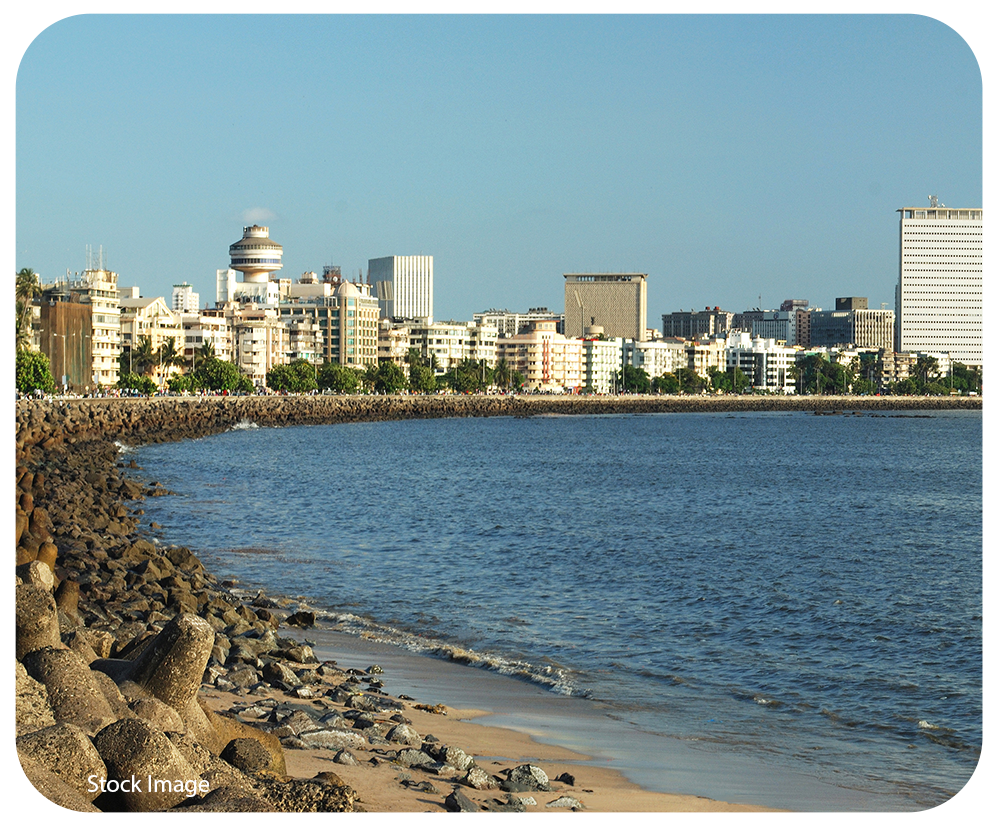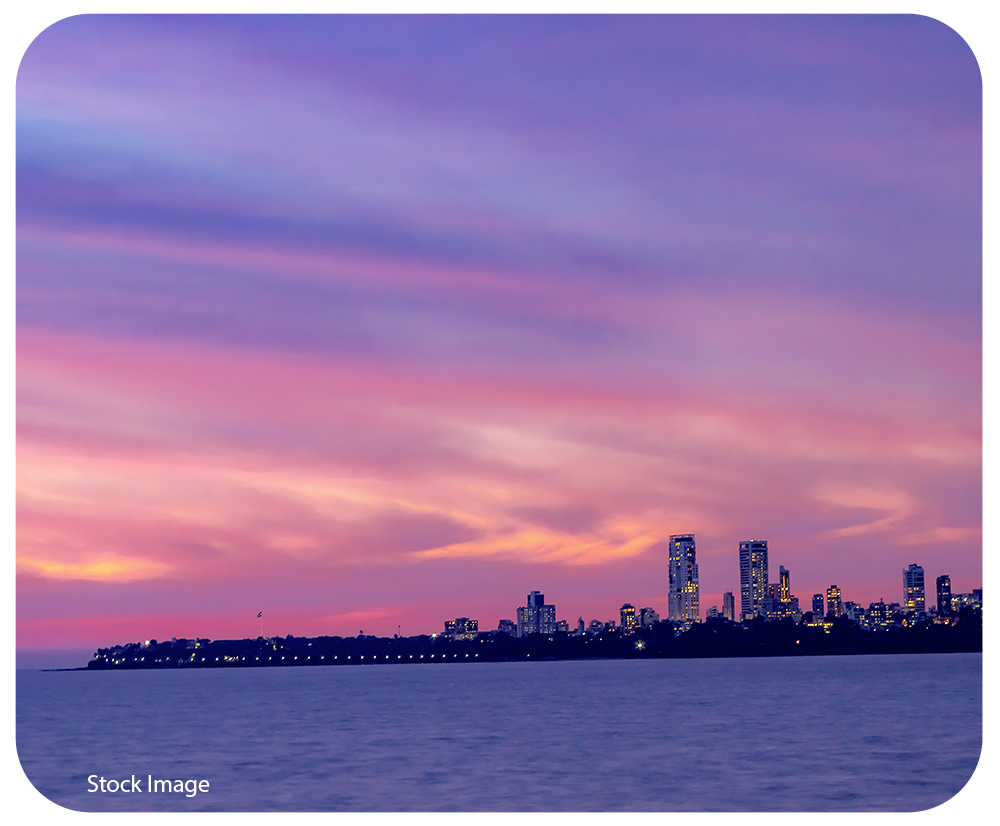
Marine Drive, Mumbai
One iconic landmark that lets visitors just sit and marvel at the wonder that is Mumbai is the
Marine Drive promenade in South Mumbai. A 3-kilometre-long promenade along the Netaji Subhash
Chandra Bose Road on the western coast of Mumbai, Marine Drive has the vast and beautiful
Arabian Sea on one side and the sparkling row of iconic landmarks and luxurious residences on
the other.
Constructed along a natural C-shaped bay, Marine Drive is also called the QueenŌĆÖs Necklace due
to its glittering night-time view. The entire stretch gets lit up and, when viewed from a
height, resembles a shimmering necklace.
At the northern end of the Marine Drive bay is the famous Girgaon Chowpatty (beach), which
offers stunning views of the sea and scrumptious street food galore. The Marine Drive stretch
connects Malabar Hill and Babulnath at the northern tip to Nariman Point at the southern
tip.
The entire stretch of the promenade is lined with beautiful palm trees and flanked by popular
architectural landmarks, upscale residential developments such as Piramal RealtyŌĆÖs Piramal
Aranya, and panoramic views of the Arabian Sea.
History of Marine Drive, Mumbai

The official name of the road is Netaji Subhash Chandra Bose Road,
but it has been and continues to be known as Marine Drive. The road, as well as the original
promenade, were constructed by leading philanthropists of the time, Mr Bhagojisheth Keer and Mr
Pallonji Mistry.
The story of how it was built is interesting. While Marine Drive is one of the most popular places to visit in Mumbai, that was not the original goal of construction;
it is the result of a failed reclamation project.
The history goes back to around the 1860s when the British administration was planning several
reclamation projects to extend the land of Mumbai. However, the projects were halted after the
American Civil War and the Great Economic Recession.
The British Government started the Backbay Reclamation Scheme in 1919 after the successful
development of the Cuffe Parade reclamation project. One of the objectives of the scheme was to
create a promenade alongside the bay connecting Nariman Point with Malabar Hill for decongesting the
city after an outbreak of the plague.
Many influential and wealthy private investors put in their own money for the construction of the
1500-acre Marine Drive that was supposed to house posh residential and commercial real estate.
However, by 1920, after several failed attempts at construction, the British engineers realised the
varied defects and shortcomings of their plan. As a result, out of the 1500 areas of the original
area to be reclaimed, only 17 acres could be actually reclaimed, which led to the creation of this
beautiful promenade.
An inscription on a lamppost at the Girgaon Chowpatty commemorates the construction of the Kennedy
Sea Face (as it was originally named after Sir Michael Kavanaugh Kennedy). Over the years, the strip
saw the construction of beautiful buildings in the Art Deco style of architecture.
The earliest residents were the whoŌĆÖs who of the Indian and European elites. While Parsis were the
major property owners, elite and wealthy Hindus who had migrated from Pakistan after partition also
owned a majority of the buildings.
One of the most famous and poshest residential buildings in the area was the Soona Mahal, built by a
Parsi businessman. It now houses the famous Pizza By The Bay restaurant. The Al-Jabreya and Al-Sabah
Court buildings were the erstwhile holiday homes of the Kuwaiti Royal Family. Various yesteryear
actors, such as Nargis, Raj Kapoor, Suraiyya, etc., also lived near Marine Drive.
In 2012, 72 years after its original construction, the entire Marine Drive stretch was resurfaced,
with bollards installed and footpaths renovated.
Read More:
Marine
Drive Beach Mumbai -
Directions and Photos









